|
Books Should Be Free Loyal Books Free Public Domain Audiobooks & eBook Downloads |
|
|
Books Should Be Free Loyal Books Free Public Domain Audiobooks & eBook Downloads |
|
Fiction |
|---|
|
Book type:
Sort by:
View by:
|
By: Plato (424-348 BC) | |
|---|---|
 Laws
Laws
Νόμοι (Laws) is Plato's final dialogue written after his attempt to advise the tyrant Dionysius II of Syracuse. The dialogue takes place between: an Athenian Stranger (Socrates? A god in human form?); the quiet Lacedaemonian Megillus; and the Cretan Cleinias. The Stranger asks whether humans live to be more effective at waging war or if there is something more important a legislator should seek to achieve. During their pilgrimage Cleinias discloses his role in the establishment of a new colony... | |
By: James B. Hendryx (1880-1963) | |
|---|---|
 Snowdrift
Snowdrift
The story revolves around Carter Brent, an alcoholic and gambler who had struck gold many times in the Yukon, but gambled and drank it away in Dawson; and Snowdrift, the half-breed who had spent her life with a wandering band of Indians in the frozen north country. Snowdrift had been raised by Wananebish, yet never knew who her father was, and yet Wananebish had somehow been able to send her to be schooled at a nearby mission.The paths of this unlikely pair would cross in the barren lands of the Yukon where Brent had hopes of finding more gold, but it was well known that there was no gold in the region between Dawson and the MacKenzie... | |
By: Harold Bell Wright (1872-1944) | |
|---|---|
 Their Yesterdays
Their Yesterdays
The story of a man and a woman, as they experience The Thirteen Truly Great Things of Life: Dreams, Occupation, Knowledge, Ignorance, Religion, Tradition, Temptation, Life, Death, Failure, Success, Love, and Memories.(Introduction by Megan Kunkel) | |
By: Stella M. Francis | |
|---|---|
 Camp-Fire Girls in the Country or The Secret Aunt Hannah Forgot
Camp-Fire Girls in the Country or The Secret Aunt Hannah Forgot
Teen-ager Hazel Edwards and the other twelve members of the Flamingo Camp-Fire Girls experience some real adventure when they are invited to spend part of their summer as guests of Hazel’s elderly aunt on her large country farm. Mrs. Hannah Hutchins is a widow living alone with a few servants and farming assistants in her home in the midwestern town of Fairberry. The girls set up camp on a section of Aunt Hannah’s farm but, before too long, an incident occurs during the annual Fourth of July celebration in Fairberry... | |
By: Henry James (1843-1916) | |
|---|---|
 The Reverberator
The Reverberator
Another Jamesian look at Americans in Paris. What happens when a reporter for an American scandal sheet (The Reverberator) is looking for a good story, though one which might interfere with the marriage plans of a young American woman in the City of Light? This book has been described as "a delicious Parisian bonbon," and its generally good humor stands in contrast with some of the writer's other work. | |
By: G. K. Chesterton (1874-1936) | |
|---|---|
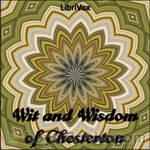 Wit and Wisdom of Chesterton
Wit and Wisdom of Chesterton
In this collection, Bevis Hillier has put together some of Chesterton's essays in "The Defandant", "Varied Types" and "Tremendous Trifles". These 12 pieces were chosen to giving a peek into the margins of Chesterton's work and give a sense of the distinctive flavor of his mind. They were also chosen with an eye to showing what a complex and fascinating character he was. | |
By: Edgar Pangborn (1909-1976) | |
|---|---|
 The Trial of Callista Blake
The Trial of Callista Blake
MANUAL OF SURGERY, OXFORD MEDICAL PUBLICATIONSBY ALEXIS THOMSON, F.R.C.S.Ed.PREFACE TO SIXTH EDITION Much has happened since this Manual was last revised, and many surgical lessons have been learned in the hard school of war. Some may yet have to be unlearned, and others have but little bearing on the problems presented to the civilian surgeon. Save in its broadest principles, the surgery of warfare is a thing apart from the general surgery of civil life, and the exhaustive literature now available on every aspect of it makes it unnecessary that it should receive detailed consideration in a manual for students... | |
By: Mark Twain | |
|---|---|
 Anti-imperialist writings
Anti-imperialist writings
This audiobook is a collection of Mark Twain's anti-imperialist writings (newspaper articles, interviews, speeches, letters, essays and pamphlets). | |
By: Thomas Hardy (1840-1928) | |
|---|---|
 The Well-Beloved
The Well-Beloved
'The Well-Beloved' tells the story of Jocelyn Pierston and his love for three generations of women - the grandmother, her daughter and grand-daughter over a period of forty years. Pierston is seeking for perfection in his choice of lover and in doing so lets opportunities for happiness pass him by. However, at the end of his life, he finds some kind of contentment in compromise. | |
 The Hand of Ethelberta
The Hand of Ethelberta
Ethelberta was raised in humble circumstances but became a governess and consequently, at the age of 18, married well. However, her husband died two weeks after the wedding. Her father-in-law, Lord Petherwin, died shortly afterwards. Ethelberta (now 21) lives with her mother-in-law, Lady Petherwin. In the three years that have elapsed since her marriage, Ethelberta has been treated to foreign travel and further privileges by Lady Petherwin but restricted from seeing her own family. The story follows Ethelberta's career as a famous poetess and storyteller... | |
By: Eleanor H. Porter (1868-1920) | |
|---|---|
 Dawn
Dawn
Dawn (also known in England as "Keith’s Dark Tower"), was published in 1919, and is set during World War I. Keith Burton is going blind. It is hard for him and his family. Most of the book deals with their ways- right and wrong- of dealing with the situation. At the end, Keith finds pride in helping blind solders.Eleanor H. Porter was a writer of many popular children’s books and novels, including the Pollyanna and Miss Billy series, as well as Just David, Oh, Money! Money! and more. | |
By: Annonymous | |
|---|---|
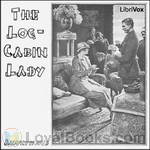 The Log-Cabin Lady
The Log-Cabin Lady
'The story of The Log-Cabin Lady is one of the annals of America. It is a moving record of the conquest of self-consciousness and fear through mastery of manners and customs. It has been written by one who has not sacrificed the strength and honesty of her pioneer girlhood, but who added to these qualities that graciousness and charm which have given her distinction on two continents.'(from the introduction) | |
By: Cornelia Meigs (1884-1973) | |
|---|---|
 The Windy Hill
The Windy Hill
When two children come to stay with their cousin, they immediately realize something is wrong, but no one will tell them what. Their cousin is strangely altered: nervous, preoccupied, hardly aware of their existence. They soon discover that a conflict is brewing among the hills and farms of the Medford Valley, one whose origins reach back over a century. They must piece it together from scattered clues, and from the stories told to them by a mysterious bee keeper and his daughter. This 1922 Newbery Honor Book tells of the traits that run in a family—honor, stubborn pride, and a dark lust for wealth—and how they shape the destinies of three generations. (Introduction by Peter Eastman) | |
By: Joel Chandler Harris (1845-1908) | |
|---|---|
 Uncle Remus Returns
Uncle Remus Returns
Uncle Remus tells these 11 stories but to the son of the original "little boy" who is visiting his grandmother on the plantation. As always Uncle Remus can be relied upon to provide funny and pointed insight into human personalities through his story telling. These were all published in the Uncle Remus magazine from 1905 and 1906 and gathered together in this book by the author. Note that these stories are reflections of another period in time and some of the language used would definitely be considered rude and/or offensive now. In keeping with the desire to present the text as the author wrote it, nothing has been changed or edited. | |
By: A. A. Milne (1882-1956) | |
|---|---|
 Once a Week
Once a Week
A collection of short stories by famed Winnie the Pooh author, A.A. Milne. This charmingly humorous work from Milne's earlier writing period was first published in Punch magazine. | |
By: John Stuart Mill (1806-1873) | |
|---|---|
 Three Essays on Religion
Three Essays on Religion
The Three Essays on Religion were written at different times during Mill's life, and only published after his death. The first two, 'Nature' and 'The Utility of Religion' date from the 1850s - the period between the publication of 'The Principles of Political Economy' and 'On Liberty'. The third longer essay, 'Theism' was written between 1868 and 1870. The three essays were published posthumously in 1874. | |
By: Charles Waddell Chesnutt (1858-1932) | |
|---|---|
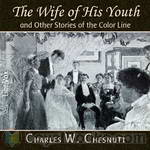 The Wife of His Youth and Other Stories of the Color Line
The Wife of His Youth and Other Stories of the Color Line
Published in 1899, The Wife of His Youth and Other Stories of the Color Line is a collection of narratives that addresses the impact of Jim Crow laws on African Americans and white Americans of the South. Many of Chesnutt's characters are of mixed-race ancestry which sets them apart for a specific yet degrading kind of treatment from blacks and whites. These stories examine particularly how life in the South was informed through a legacy of slavery and Reconstruction—how members of the “old dominion” desperately struggled to breath life into the corpse of an antebellum caste system that no longer defined the path and direction in which this country was headed... | |
By: Daniel A. Lord (1888-1955) | |
|---|---|
 Clouds Cover the Campus
Clouds Cover the Campus
On an American college campus, in the early years of World War II, a professor from Germany is murdered and the plans for a new bomb sight he had invented are missing. Who murdered the professor and stole the plans? And are the accidents, happening with alarming frequency to young student aviators from the campus, really accidents -- or is some unknown conspiracy afoot?This mystery novel was written by Daniel A Lord, S.J., a priest and popular American Catholic writer. The subjects of the works in his bibliography range from religion, humor, plays, songs, mysteries and even politics. His most influential work was possibly in drafting the 1930 Production Code for motion pictures. ( | |
By: Margaret Burnham | |
|---|---|
 The Girl Aviators and the Phantom Airship
The Girl Aviators and the Phantom Airship
Teenagers Peggy Prescott and her brother Roy share a love of aviation that they inherited from their late father. Mr. Prescott had always dreamed of building an aeroplane that would be free of the defects of planes already invented. Peggy and Roy manage to build a plane starting with the framework their father had begun. Peggy christens it ‘The Golden Buttefly’ and she and Roy are determined to enter it in a young aviator’s contest for a prize of $5000. The Prescotts need the money desperately to save the home they share with their aunt which is about to be taken from them by the rather nasty banker, Mr... | |
By: Dorothy Canfield Fisher (1879-1958) | |
|---|---|
 The Bent Twig
The Bent Twig
Semi-autobiographical series of incidents in the life of an intellectual American family in the late 19th - early 20th Century as seen by favored daughter, Sylvia Marshall. Her father is an economics professor in a Midwestern state university and she is following in his inquisitive footsteps. Canfield writes this in a matter-of-fact manner with Tarkingtonesque good humor. | |
By: Victor Hugo (1802-1885) | |
|---|---|
 The Last Day of a Condemned
The Last Day of a Condemned
A man who has been condemned to death writes down his cogitations, feelings and fears while he is waiting for his execution. He does not betray his name to the reader or what he has done. He describes his life in prison, everything from what his cell looks like to the personality of the prison priest. (Introduction by Wikipedia) | |
By: Elizabeth Stoddard (1823-1902) | |
|---|---|
 The Morgesons
The Morgesons
Stoddard’s novel traces the education and development of a young female in American middle-class society. The protagonist, Cassandra Morgeson, is educated by a series of journeys she makes throughout her youth and early adulthood. Each new setting represents a different stage in her intellectual development.Cassandra is born in Surrey, a small New England town. Surrey is quiet and isolated, granting a young woman little intellectual stimulation. Cassandra escapes the boredom of domestic life through stories of adventure and exploration. Surrey instills in Cassandra a restlessness that drives her quest for knowledge and experience.(Introduction by Wikipedia) | |
By: Rudyard Kipling (1865-1936) | |
|---|---|
 Stalky & Co (More Stories)
Stalky & Co (More Stories)
This small collection puts together stories by Kipling that feature the characters from Stalky & Co. but which for some reason were not included in the book Stalky & Co. Of these the more interesting is the first, “Stalky”, which introduces the characters and is full of the humour and understanding of adolescent males and their timeless jostling with adult powers that characterise the stories in Stalky & Co.“Stalky” was the first of the tales to be written, and was published in 1898, so it is difficult to understand how it came to be omitted from the book in 1899... | |
By: Ella Middleton Tybout (1871-1952) | |
|---|---|
 The Wife of the Secretary of State
The Wife of the Secretary of State
In this political thriller set at the turn of the 20th century, several lives, both of Washington insiders and those on the periphery, intersect over the issue of some stolen diplomatic papers. And what hidden secrets bind Mrs. Redmond, the wife of the Secretary of State, to the unscrupulous Count Valdmir, the Russian ambassador? Politics, power, and intrigue combine in this novel, first published in 1905. | |
By: George Sand (1804-1876) | |
|---|---|
 Indiana
Indiana
This is George Sand's first novel. Her real name was Amantine (or Amandine) Lucile Dupin, and she later became baroness Dudevant. As an aristocratic woman living in 19th century France, she chose her first novel to be, above all, a realistic work. Indiana is trapped since the age of 16 in a loveless marriage with a rich, much older, man. Her only real friend is her cousin, sir Ralph, who, sometimes, just does things which are- logically- the best for her but- mentally- the worsed he could do. She tries to find means of escape. But would she be able to recreate her own reality? Can a woman find true love while trying to maintain her identity and independence in a man's world?" | |
By: Elizabeth Bonhôte (1744-1818) | |
|---|---|
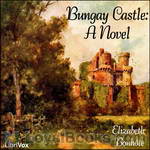 Bungay Castle: A Novel
Bungay Castle: A Novel
MANUAL OF SURGERY, OXFORD MEDICAL PUBLICATIONSBY ALEXIS THOMSON, F.R.C.S.Ed.PREFACE TO SIXTH EDITION Much has happened since this Manual was last revised, and many surgical lessons have been learned in the hard school of war. Some may yet have to be unlearned, and others have but little bearing on the problems presented to the civilian surgeon. Save in its broadest principles, the surgery of warfare is a thing apart from the general surgery of civil life, and the exhaustive literature now available on every aspect of it makes it unnecessary that it should receive detailed consideration in a manual for students... | |
By: Florence Morse Kingsley (1859-1937) | |
|---|---|
 And So They Were Married
And So They Were Married
This is the story of Elizabeth North a young woman who becomes engaged and with the aid of a social climbing friend begins to plan her wedding beyond what she can afford. Her friend Evelyn Tripp, convinces Elizabeth that she “simply can’t afford” not to live a fashionable and expensive lifestyle. However her husband and her grandma help her to see sense and pull herself out of the debt she has got herself into. | |
By: August Strindberg (1849-1912) | |
|---|---|
 The Red Room
The Red Room
A young idealistic civil servant, Arvid Falk, leaves the drudgery of bureaucracy to become a journalist and author. As he explores various social activities — politics, publishing, theatre, philanthropy, and business — he finds more hypocrisy and corruption than he thought possible. He takes refuge with a group of "bohemians", who meet in a red dining room in Berns Salonger to discuss these matters. (Introduction adopted from Wikipedia) | |
By: Ben Hecht (1894-1964) | |
|---|---|
 Gargoyles
Gargoyles
The author, Ben Hecht, was a prolific writer as well as a renowned screenwriter, producer, and director of films. His screenwriting skills include some of the most popular films of Hollywood's golden era, including "Gone With the Wind", "Wuthering Heights", "Spellbound", and "Scarface", to name but a few.Hecht had already established himself as a novelist and an author of short stories when "Gargoyles" was published. "Gargoyles" delves deep into the psyches of individuals and of their relationships within social classes, revealing both the darker sides and the sentimental sides... | |
By: Unknown | |
|---|---|
 The Drama: A Quarterly Review
The Drama: A Quarterly Review
This is a collection of theatrical essays from the American quarterly The Drama, including six non-fiction works -- 3 profiles: Schnitzler, Andreyev, and O'Neill, and 3 articles: Characterization vs Situation, The Actor in England, & The Evolution of The Actor. | |
By: Francis Godwin (1562-1633) | |
|---|---|
 The Man in the Moone
The Man in the Moone
A self-serving Spaniard discovers a means of traveling to the moon, describing his sensations in transit in terms remarkably consistent with modern astronauts' experiences. He finds on the moon a utopia, which he describes in detail, but being a fallen creature, he takes the first opportunity of coming home. ( | |
By: Henry Rider Haggard (1856-1925) | |
|---|---|
 Pearl Maiden
Pearl Maiden
This is the story of Miriam, an orphan Christian woman living in Rome in the first century. She falls in love with a Roman officer, but knows that her Jewish childhood playmate loves her too and will do anything in order to get her love in return. | |
By: Barbara Hofland (1770-1844) | |
|---|---|
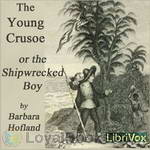 The Young Crusoe, or The Shipwrecked Boy
The Young Crusoe, or The Shipwrecked Boy
The Young Crusoe, or The Shipwrecked Boy (1829) Novel. At the novel's opening, Charles Crusoe, thirteen years of age, asks his mother if he is related to the famous Robinson Crusoe, and is told that he is not. His future adventures, however, strongly resemble those of the earlier Crusoe. | |
By: Cardinal Nicholas Patrick Wiseman (1802-1865) | |
|---|---|
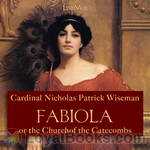 Fabiola or The Church of the Catacombs
Fabiola or The Church of the Catacombs
This historical novel is set in Rome in the early 4th century AD, during the time of the cruel persecution of Christians under the Emperor Diocletian. The heroine of the book is Fabiola, a young pagan beauty from a noble Roman family. Fabiola seems to have everything, including a superior education in the philosophers, yet under the surface, she is not content with her life. One day, in a fit of rage, she attacks and wounds her slave girl Syra, who is a secret Christian. The proud, spoiled Roman girl is humbled by Syra's humility, maturity and devotion to her in this situation, and a slow transformation begins... | |
By: Frances Trego Montgomery (1858-1925) | |
|---|---|
 Zip, the Adventures of a Frisky Fox Terrier
Zip, the Adventures of a Frisky Fox Terrier
Zip, a little fox terrier, lives in the town of Maplewood in the house of his owner, Dr. Elsworth. Each day when Dr. Elsworth drives his carriage to visit his patients, Zip goes along with him so that he can keep the doctor company and, most importantly, visit with the other animals in the town. Zip likes to find out all the latest news so that he can tell it to his best friend, Tabby the cat, who also lives with Dr. Elsworth. However, he also finds himself getting into mischief, whether it's trying to solve a burglary, sneaking fried chicken from a picnic, getting stuck in a stovepipe or fighting with Peter-Kins the monkey. Zip is one dog who never has a dull day. | |
By: Owen Wister (1860-1938) | |
|---|---|
 A Journey in Search of Christmas
A Journey in Search of Christmas
Cowboy Lin McLean rides into frontier Cheyenne, Wyoming, at Christmastime and learns a powerful meaning of Christmas. Author Owen Wister is well known for his western writings, famously the novel The Virginian. Illustrations are by the western artist Frederic Remington. | |
By: Edna Ferber (1885-1968) | |
|---|---|
 The Dancing Girls
The Dancing Girls
The Dancing Girls is just one of the 4 excellent short stories in this recording. All written by the master, Edna Ferber for magazines between 1910 and 1919 they naturally contain her unique mix of real people, sadness, joy and always humor. The lead Story, The Dancing Girls, is my favorite for the way she paints a picture of mid America small town society and how good people somehow (and sometimes) can find their way to each other. Other stories in this collection are Old Lady Mandel; Long Distance; and One Hundred Percent | |
By: Washington Irving (1783-1859) | |
|---|---|
 The Alhambra: A Series of Tales and Sketches of the Moors and Spaniards
The Alhambra: A Series of Tales and Sketches of the Moors and Spaniards
This is a collection of essays, verbal sketches, and stories by Washington Irving. Irving lived at the Alhambra Palace while writing some of the material for his book. In 1828, Washington Irving traveled from Madrid, where he had been staying, to Granada, Spain. At first sight, he described it as "a most picturesque and beautiful city, situated in one of the loveliest landscapes that I have ever seen." He immediately asked the then-governor of the historic Alhambra Palace as well as the archbishop of Granada for access to the palace, which was granted because of Irving's celebrity status... | |
By: Upton Sinclair (1878-1968) | |
|---|---|
 They Call Me Carpenter
They Call Me Carpenter
The story takes place in the fictional city of Western City circa 1920. It begins with a man named Billy who is attacked by a mob of ex-servicemen outside a theater after watching a German film. Billy stumbles into a church to escape the mob and is visited by Carpenter, that is Jesus, who walks out of the stained glass window of the church. Carpenter is shocked and appalled by his observations of greed, selfishness, lust, sorrow, and the ultimate division between rich and poor. The story then roughly follows the ministry of Jesus. | |
By: Lilian Gask (1865-????) | |
|---|---|
 The Fairies and the Christmas Child
The Fairies and the Christmas Child
The worst of being a Christmas Child[2] is that you don’t get birthday presents, but only Christmas ones. Old Naylor, who was Father’s coachman, and had a great gruff voice that came from his boots and was rather frightening, used to ask how I expected to grow up without proper birthdays, and I thought I might have to stay little always. When I told Father this he laughed, but a moment later he grew quite grave. “Listen, Chris,” he said. And then he took me on his knee—I was a small chap then—and told me things that made me forget old Naylor, and wish and wish that Mother could have stayed with us... | |
By: Booth Tarkington (1869-1946) | |
|---|---|
 Monsieur Beaucaire
Monsieur Beaucaire
A madcap Frenchman posing as an ambassador's barber blackmails a dishonest duke to introduce him as a nobleman to a wealthy belle of Bath. Since the duke himself hopes to mend his fortunes by wedding this very woman, he attempts to murder Beaucaire, and failing that to discredit him. To test the lady's mettle, Beaucaire allows his deception to be exposed--up to a point--and there we must draw the curtain to preserve the surprise ending. ( | |
By: Vernon Lee (1856-1935) | |
|---|---|
 A Phantom Lover
A Phantom Lover
A Phantom Lover is a supernatural novella by Vernon Lee (pseudonym of Violet Paget) first published in 1886. Set in a Kentish manor house, the story concerns a portrait painter commissioned by a squire, William Oke, to produce portraits of him and his wife, the eccentric Mrs. Alice Oke, who bears a striking resemblance to a woman in a mysterious, seventeenth century painting. | |
By: Pansy (1841-1930) | |
|---|---|
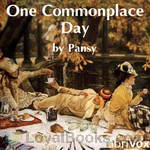 One Commonplace Day
One Commonplace Day
A temperance lecturer misses his train and ends up attending a town picnic. It was a common enough picnic on a commonplace day. But the discussions, actions, and attitudes from that picnic reverberate through the lives of many people. What are the far-reaching consequences of one commonplace day in OUR lives? | |
By: Henry James (1843-1916) | |
|---|---|
 The Last of the Valerii
The Last of the Valerii
An unnamed American painter resident in Rome serves as narrator in this story, watching as his god-daughter Martha, becomes the wife of Prince Marco Valerio. The young bride is eager to use some of her American fortune in the service of archeology at the Villa Valerio, her husband's somewhat run down Roman house. Archeology can be, her god-father suggests, a rather expensive hobby, but to his (and her) surprise, the dig brings to light a lovely marble statue of Juno. Martha is overjoyed, but it is soon clear that her husband is overcome by the discovery, and overcome in ways that are to be disquieting... | |
By: Eliza Haywood (1693-1756) | |
|---|---|
 The History of Miss Betsy Thoughtless, Volume 1
The History of Miss Betsy Thoughtless, Volume 1
The flirtations of a rich young maiden, Miss Betsy Thoughtless with several suitors, as she alienates the right man by refusing to take the issue of marriage seriously. Because of this her guardian commits her to marriage to the wrong man, a situation over which she has little control. As the heroine describes her fate, this text exposes the institution of marriage, the powerlessness of women and the double standards held during that time.(Introduction by Joyce Martin) | |
By: George Moore (1852-1933) | |
|---|---|
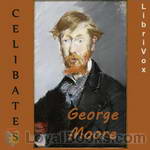 Celibates
Celibates
The author is considered the first great Irish writer of realist fiction and is said to have been an inspiration for James Joyce. Celibates is a novel of three characters: Mildred Lawson, John Norton and Agnes Lahens.They have nothing in common other than an absolute love of themselves and an inability to sympathize with others. In that vein, it constitutes a striking image of our own modern day self-absorbed society. (Introduction by James Carson) | |
By: Silas Hocking (1850-1935) | |
|---|---|
 Her Benny
Her Benny
A very heart touching story about two homeless children, a brother and sister, living on the streets of Liverpool, England during Victorian times. | |
By: Florence Irwin (1869-19??) | |
|---|---|
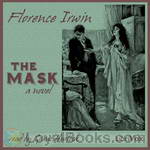 The Mask
The Mask
The mask is the one which we all wear, even though unconsciously, to hide our thoughts and feelings. Alison Terry wore one, though she had never realized it until she faced a crisis in her life. Alison, a girl of sympathetic mood and action whose keen intelligence is overbalanced by the inexperience of innocence and a sheltered upbringing, goes to New York with her erratic husband, Phil Howland. She passes through various stages of disillusionment inevitably resulting from cheap boarding-house life,... | |
By: Henry James | |
|---|---|
 Sir Edmund Orme
Sir Edmund Orme
Henry James wrote a number of ghost stories -- The Turn of the Screw being the most famous. Did he believe in ghosts himself, as did many of his contemporaries? It's generally possible to find earthly interpretations, Freudian and other, for his ghosts. Sir Edmund Orme, though, is unquestionably a real ghost -- except of course that James's unnamed narrator tells the story in the voice of yet a third man, and the narrator himself passes no judgments on the factual nature of what he is reporting (there's a resemblance here to The Turn of the Screw)... | |
By: Dreiser, Theodore (1871-1945) | |
|---|---|
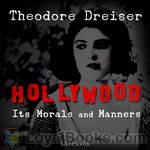 Hollywood: Its Morals and Manners
Hollywood: Its Morals and Manners
Serialized in Shadowland from November 1921 to February 1922, Hollywood: Its Morals and Manners is Theodore Dreiser's shocking four part expose on the motion picture industry. In it, he shares his observations from his extended stay in Los Angeles, and gives us an intimate look at the seedier underside of Hollywood. | |
By: Harold Bindloss (1866-1945) | |
|---|---|
 Northwest!
Northwest!
Northwest! takes place in western Canada, primarily western Alberta and British Columbia. The story revolves around Jimmy not being sure whether or not he shot and killed a Northwest Mounted while he and some friends were out hunting one day. Not exactly a bushman, he needs to head northwest to avoid capture by the officials who are out to find him and bring him to trial. At least that's what he suspects. Survival in the wilderness for one who was raised in British class proves to be a daunting experience, and we learn of the trials he is to be put through while he is on the lam. | |
By: Various | |
|---|---|
 Short Nonfiction Collection Vol. 026
Short Nonfiction Collection Vol. 026
A collection of short nonfiction works in the public domain. The selections included in this collection were independently chosen by the readers, and the topics encompass history, travel, mathematics, humor, philosophy, and nature. | |
 Insomnia Collection, Vol. 2
Insomnia Collection, Vol. 2
Soporific dullness is in the ear of the listener, and what's tedium incarnate to one person will be another person's passion and delight. However, it is hoped that at least one from the range of topics here presented will lull the busy mind to a state of sweet sleep. (Introduction by Cori Samuel) | |
By: Jessie Graham Flower (-1931) | |
|---|---|
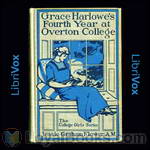 Grace Harlowe's Fourth Year at Overton College
Grace Harlowe's Fourth Year at Overton College
The four series follow Grace Harlowe and her friends through high school, college, abroad during World War I, and on adventures around America. In The High School Girls Series, Grace attends Oakdale High School with friends Anne Pierson, Nora O'Malley, and Jessica Bright. The four promote fair play and virtue while winning over troubled girls like Miriam Nesbit and Eleanor Savell, playing basketball, and founding sorority Phi Sigma Tau. The group becomes friends with boys in their acquaintance: David Nesbit, Tom Gray, Hippy Wingate, and Reddy Brooks, forming "The Eight Originals." (Introduction by Wikipedia) | |
By: A. S. M. Hutchinson (1879-1971) | |
|---|---|
 If Winter Comes
If Winter Comes
If Winter Comes, was in many aspects ahead of its time, dealing with an unhappy marriage, eventual divorce, and an unwed mother who commits suicide. According to the New York Times, "If Winter Comes" was the best-selling book in the United States for all of 1922. | |
By: Arthur Machen (1863-1947) | |
|---|---|
 The Angels of Mons
The Angels of Mons
The Angels of Mons is a popular legend about a group of angels who supposedly protected members of the British army in the Battle of Mons at the outset of World War I. The story is fictitious, developed through a combination of a patriotic short story by Arthur Machen, rumours, mass hysteria and urban legend, claimed visions after the battle and also possibly deliberately seeded propaganda. | |
By: Cal Stewart (1856-1919) | |
|---|---|
 Uncle Josh's Punkin Centre Stories
Uncle Josh's Punkin Centre Stories
A collection of comedic short stories from the perspective of an old country man. | |
By: Katharine Pyle (1863-1938) | |
|---|---|
 Tales of Folk and Fairies
Tales of Folk and Fairies
In "Tales of Folk and Fairies" Ms. Pyle tells 15 different children's stories from around the world; each more delightful than the last. Each story stands completely on it's own and although they were probably meant for children, adults will certainly enjoy them as well. | |
By: Margaret Gatty (1809-1873) | |
|---|---|
 Parables from Nature
Parables from Nature
Parables From Nature is a collection of short stories which were originally published as 4 separate volumes. They are inspired from Nature and written for children. Nevertheless, Gatty uses children's literature because she knows that in doing so, she can reach a wider group of readers and point out problems from the Victorian Age. | |
By: Anonymous | |
|---|---|
 The Broken Vase and Other Stories
The Broken Vase and Other Stories
The Broken Vase and Other Stories;for Children and Youth,Compiled by a Teacher | |
By: Randall Garrett (1927-1987) | |
|---|---|
 Nor Iron Bars A Cage....
Nor Iron Bars A Cage....
Iron bars do not confine a Man—only his body. There are more subtle, and more confining bindings, however....Police methods of the future will naturally use complex new technology but police will still need to deal with the same old sad human nature, that is forever doing horrible deeds. The night stick may be replaced by the hypo-gun but is prison the only solution? Listen to this speculative story from Randall Garrett bizarre mind and see. | |
By: A. A. Milne (1882-1956) | |
|---|---|
 Not That It Matters
Not That It Matters
More of the witty, wry, and deliciously wicked essays and articles written by Milne. Most people know him as the creator of Winnie The Pooh, but he worked for many years as editor of Punch Magazine and these are some of his best. Not That It Matters is a collection of over 40 of these short stories and articles. Not That It Matters collects his columns for Punch, which include poems, essays and short stories, from 1912 to 1920. Most of his writing pokes fun, both gentle and not so gentle at a variety of topics... | |
By: George Horace Lorimer (1869-1937) | |
|---|---|
 Letters from a Self-Made Merchant to His Son
Letters from a Self-Made Merchant to His Son
Being the Letters written by John Graham, Head of the House of Graham & Company, Pork-Packers in Chicago, familiarly known on 'Change as "Old Gorgon Graham," to his Son, Pierrepont, facetiously known to his intimates as "Piggy." George Horace Lorimer was an American journalist and author. He is best known as the editor of The Saturday Evening Post. | |
By: Francis William Bourdillon (1844-1912) | |
|---|---|
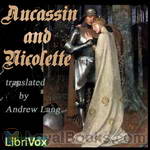 Aucassin and Nicolette.
Aucassin and Nicolette.
Aucassin and Nicolette is a medieval romance written in a combination of prose and verse called a “song-story.” Created probably in the early 13th century by an unknown French author, the work deals with the love between the son of a count and a Saracen slave girl who has been converted to Christianity and adopted by a viscount. Since Aucassin’s father is strongly opposed to their marriage, the two lovers must endure imprisonment, flight, separation in foreign lands, and many other ordeals before their ardent love and fierce determination finally bring them back together... | |
By: Anonymous | |
|---|---|
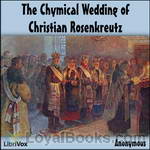 The Chymical Wedding of Christian Rosenkreutz
The Chymical Wedding of Christian Rosenkreutz
The Chymical Wedding of Christian Rosenkreutz was edited in 1616 in Strasbourg (annexed by France in 1681). It is the third of the original manifestos of the mysterious "Fraternity of the Rose Cross" (Rosicrucians). NOTE: It was translated into English for the first time in 1690 by E. Foxcroft. This translation became the source for many of the modern attempts to improve the original. The translation presented here is that of E. Foxcroft. Although the book first appeared in 1616, the story takes place over 150 years earlier... | |
By: George W. Bateman | |
|---|---|
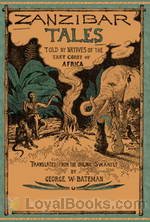 Zanzibar Tales
Zanzibar Tales
If you have read any accounts of adventure in Africa, you will know that travelers never mention animals of any kind that are gifted with the faculty of speech, or gazelles that are overseers for native princes, or hares that eat flesh. No, indeed; only the native-born know of these; and, judging by the immense and rapid strides civilization is making in those parts, it will not be long before such wonderful specimens of zoölogy will be as extinct as the ichthyosaurus, dinornis, and other poor creatures who never dreamed of the awful names that would be applied to them when they were too long dead to show their resentment... | |
By: L. G. Moberly (1861-1931) | |
|---|---|
 Christina
Christina
Christina is a story of two people: Christina, a strong young and poor woman, who searches for work and finds more than she bargained for, and Rupert, a middle class man, who is pressured to marry and settle down. These two people meet frequently and start to confide in each other. But can they really help one another put their wounds from the past to rest and start a new life? And will their new life include one another? Lucy Gertrude Moberly was an English popular novelist whose wonderful writing style deserves attention. | |
By: Christopher Morley (1890-1957) | |
|---|---|
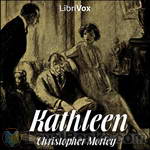 Kathleen
Kathleen
A group called the Scorpions, eight Oxford undergraduates, find a letter Kathleen wrote a letter to Joe at Oxford. They build up an image of Kathleen and Joe from the letter and set out to find and meet Kathleen. The competition between them leads to many entertainingly funny scenarios. | |
By: Frances Hodgson Burnett (1849-1924) | |
|---|---|
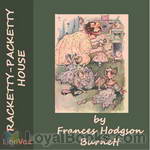 Racketty-Packetty House and other stories
Racketty-Packetty House and other stories
This is a collection of short stories and fairy tales by Frances Hodgson Burnett, the author of The Secret Garden and A Little Princess. | |
By: Frank Gee Patchin (1861-1925) | |
|---|---|
 The Pony Rider Boys in Texas
The Pony Rider Boys in Texas
Yee-hawww! The Pony Rider Boys are on the trail again! In the second book of this series, Professor Zepplin has taken the young men to San Diego, Texas, to experience the life of a cowboy. The cattle drive will take them across the great state of Texas, where they will meet many dangers and adventures. | |
By: Stephen Leacock (1869-1944) | |
|---|---|
 My Discovery of England
My Discovery of England
"In the course of time a very considerable public feeling was aroused in the United States and Canada over this state of affairs. The lack of reciprocity in it seemed unfair. It was felt (or at least I felt) that the time had come when some one ought to go over and take some impressions off England. The choice of such a person (my choice) fell upon myself. By an arrangement with the Geographical Society of America, acting in conjunction with the Royal Geographical Society of England (to both of whom I communicated my proposal), I went at my own expense."And from thence follow the impressions of Canadian political economist and humourist, Stephen Leacock, after a lecturing visit to England. | |
By: Johanna Spyri (1827-1901) | |
|---|---|
 Maezli
Maezli
"Mäzli" may be pronounced the most natural and one of the most entertaining of Madame Spyri's creations. The atmosphere is created by an old Swiss castle and by the romantic associations of the noble family who lived there. Plot interest is supplied in abundance by the children of the Bergmann family with varying characters and interests. A more charming group of young people and a more wise and affectionate mother would be hard to find. Every figure is individual and true to life, with his or her special virtues and foibles, so that any grown person who picks up the volume will find it a world in miniature and will watch eagerly for the special characteristics of each child to reappear... | |
By: Ossip Schubin (1854-1934) | |
|---|---|
 Our Own Set
Our Own Set
The Austrian nobility in Rome forms a very close circle, into which only those of high rank and wealth are admitted. They managed to get along with Cecil Sterzl, who, although not one of their own, is regarded as quite an amiable man. However, when he brings his younger sister Zinka into that circle, she is received very coldly at first, if at all. And when, with her fresh and unaffected manners, she wins one heart after another, especially that of the handsome Count Sempaly, she also excites jealousy and contempt in many members of that "set"... | |
By: M. E. Francis (1859-1930) | |
|---|---|
 In a North Country Village
In a North Country Village
M. E. Francis was born Mary E. Sweetman in Dublin and moved to Lancashire on her marriage to Francis Nicholas Blundell, of the Blundell family, who remain squires of Little Crosby, the last Catholic recusant village in England, which lies a few miles north of Liverpool. Blundell died young and Mary went on to write more than 50 books, using her husband's Christian name as pen name, including this collection of 12 stories set in Little Crosby (‘Thornleigh’). A romantic portrait of mid-19th century... | |
By: William Alexander MacKay (1842-1905) | |
|---|---|
 Zorra Boys at Home and Abroad, or, How to Succeed
Zorra Boys at Home and Abroad, or, How to Succeed
By Zorra, in the following sketches, is meant a little district in Oxford county, Ontario, some ten miles square, composed of part of East and part of West Zorra, and containing a population of about fourteen hundred. It was settled about the year 1830, chiefly by Highlanders from Sutherlandshire, Scotland.Within the last forty years there have gone from this district over one hundred young men who have made their mark in the world. With most of these it has been the writer's good fortune to be personally and intimately acquainted; and companionship with some of them has been to him a pleasure and a benefit... | |
By: J. M. Barrie (1860-1937) | |
|---|---|
 Peter and Wendy
Peter and Wendy
Peter and Wendy tells the classic story of Peter Pan, a mischievous little boy who can fly, and his adventures on the island of Neverland with Wendy and her brothers, the fairy Tinker Bell, the Lost Boys, the Indian princess Tiger Lily, and the pirate Captain Hook. (Introduction modified from Wikipedia) | |
By: Harold Bindloss (1866-1945) | |
|---|---|
 The Protector
The Protector
Harold Bindloss, while born in England, based most of his novels in western Canada, and The Protector is based primarily in and around Vancouver and Victoria.There is often danger involved in the mining and timber industries north of Vancouver, and there is also danger in the trust given to people who own and operate these mines and timber lands. And finding one's way in locating them can be equally as difficult as well. Wallace Vane and his trusted friend Carroll seemed to encounter these dangers in a seemingly endless journey both for business purposes and for adventure in their search for adequate timber land which they had inadvertently heard of... | |
By: Denis Diderot (1713-1784) | |
|---|---|
 Rameau's Nephew
Rameau's Nephew
Rameau's Nephew, or the Second Satire (French: Le Neveu de Rameau ou La Satire seconde) is an imaginary philosophical conversation written by Denis Diderot, probably between 1761 and 1772. It was first published in 1805 in German translation by Goethe, but the French manuscript used has subsequently disappeared. The German version was translated back into French by de Saur and Saint-Genies and published in 1821. The first published version based on French manuscript appeared in 1823 in the Brière edition of Diderot's works... | |
By: Charles G. D. Roberts (1860-1943) | |
|---|---|
 Hoof and Claw
Hoof and Claw
These 14 short stories about animals are superb examples of Roberts smooth storytelling style. Knows as the Father of Canadian Poetry, he loved to also write in prose about the wilderness and the personalities of the animals to be found there as well as the exciting things they are capable of. Bears, White Wolves, Lynxs, hawks and yes, cattle are just a few of the animals written about. | |
By: Bill Hart's Pinto Pony, William S. Hart (1864-1946) | |
|---|---|
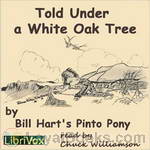 Told Under a White Oak Tree
Told Under a White Oak Tree
An inside look into the wild world of silent movie cowboy William S. Hart... as narrated by his horse! This is a fascinating (if fictionalized) behind-the-scenes look into the wild, action-packed world of a Hollywood cowboy and stuntman. TOLD UNDER A WHITE OAK TREE is a charming children's book that not only gives us a fanciful account of Hart's career as Hollywood's premier western hero, but also tells a rousing adventure story of his exceptional (if somewhat smart-alecky) equine companion, who strives to become as renowned a screen legend as his master... | |
By: Alexander Pushkin (1799-1837) | |
|---|---|
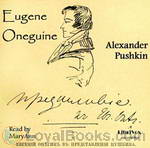 Eugene Onéguine
Eugene Onéguine
Eugene Onéguine is a classic of Russian literature, and its eponymous protagonist has served as the model for a number of Russian literary heroes (so-called superfluous men). It was published in serial form between 1825 and 1832. The first complete edition was published in 1833, and the currently accepted version is based on the 1837 publication.Almost the entire work is made up of 389 stanzas of iambic tetrameter with the unusual rhyme scheme "AbAbCCddEffEgg", where the uppercase letters represent feminine rhymes while the lowercase letters represent masculine rhymes... | |
By: Various | |
|---|---|
 The Sturdy Oak
The Sturdy Oak
At a certain committee meeting held in the spring of 1916, it was agreed that fourteen leading American authors, known to be extremely generous as well as gifted, should be asked to write a composite novel....Third, to have the novel finished and published serially during the autumn Campaign of 1917.The carrying out of these requirements has not been the childish diversion it may have seemed. Splendid team work, however, has made success possible.Every author represented, every worker on the team, has gratuitously contributed his or her services; and every dollar realized by the serial and book publication of "The Sturdy Oak" will be devoted to the Suffrage Cause... | |
By: Frank Linderman (1869-1938) | |
|---|---|
 Indian Why Stories: Sparks from War Eagle's Lodge-Fire
Indian Why Stories: Sparks from War Eagle's Lodge-Fire
Delightful fables, collected by a devotee of Indian lore, recounts many of the legends told to him by tribal members, among them intriguing explanations of "Why the Chipmunk's Back is Striped," "How the Otter Skin Became Great Medicine," "How the Man Found His Mate," and "Why Blackfeet Never Kill Mice." | |
By: William Kingdon Clifford | |
|---|---|
 The Ethics of Belief
The Ethics of Belief
This is an essay on decision biases and a critique on prejudices, neatly written and thought provoking. | |
By: Agnes Repplier (1855-1950) | |
|---|---|
 In Our Convent Days
In Our Convent Days
With her usual wit and charm, Ms. Repplier recalls her days at Eden Hall, the Convent of the Sacred Heart in Torresdale, north of Philadelphia. She shares the highlights (and some of the low lights) of her time there. Perhaps this sharp eye, nurtured by her willfulness and independent spirit, was the reason she was not invited to return to Eden after her second year. Not only Catholics or boarding school alumnae will find this book entertaining; anyone who went to school or who looks back on their childhood will see their own experience somewhere in this memoir. | |
By: Myrtle Reed (1874-1911) | |
|---|---|
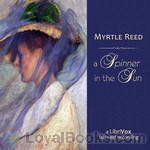 A Spinner in the Sun (dramatic reading)
A Spinner in the Sun (dramatic reading)
Myrtle Reed may always be depended upon to write a story in which poetry, charm, tenderness and humor are combined into a clever and entertaining book. Her characters are delightful and she always displays a quaint humor of expression and a quiet feeling of pathos which give a touch of active realism to all her writings. In "A Spinner in the Sun" she tells an old-fashioned love story, of a veiled lady who lives in solitude and whose features her neighbors have never seen. There is a mystery at the heart of the book that throws over it the glamour of romance. | |
By: Amanda McKittrick Ros (1860-1939) | |
|---|---|
 Irene Iddesleigh
Irene Iddesleigh
Amanda McKittrick Ros, a Northern Irish writer, did for the novel what William McGonagall did for poetry and Florence Foster Jenkins for the coloratura voice. She published a number of novels (all at her own expense) and in addition to being a novelist was a poet, her best known being 'Visiting Westminster Abbey' which beginsHoly Moses!Take a look!Flesh decayed in every nook!Some rare bits of brain lie here,Mortal loads of beef and beer.C.S. Lewis, J.R. Tolkien and The Inklings were admirers and held competitions to see who could read her work for the longest time whist keeping a straight face... | |
By: Clifton Johnson | |
|---|---|
 The Farmer's Boy
The Farmer's Boy
A year in the life of a New England farm boy at the end of the 19th century (Introduction by LC) | |
By: Edith Wharton (1862-1937) | |
|---|---|
 The Marne: a tale of the war
The Marne: a tale of the war
American writer Edith Wharton is known for her novels of manners set in old New York; yet much of her adult life was spent in France. She lived in Paris throughout World War I and was heavily involved in refugee work. Her 1918 novella The Marne dramatizes the events of the war as seen through the eyes of 15-year-old Troy Belknap, an American boy who longs to join up and save his beloved France. | |
By: Regina Victoria Hunt | |
|---|---|
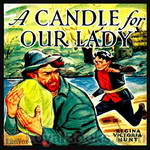 A Candle For Our Lady
A Candle For Our Lady
Dark times for British Catholics hung over England in the days of King Henry VIII. Henry, influenced by the hated Thomas Cromwell, fell into opposition with them, suppressing them, and closing religious houses. In that period a famous shrine, erected centuries earlier at Walsingham and dedicated to our Lady, drew people from far and near for it was a favorite place of pilgrimage and the site of many miracles.On their grandmother's and uncle's farm, far removed from this scene of persecution, were Jemmy Reynolds and his sister Joan... | |
By: Rev. Gerald T. Brennan (1898-1962) | |
|---|---|
 For Heaven's Sake: Little Talks to Little Folks
For Heaven's Sake: Little Talks to Little Folks
This is the second book in the “Angel Food” series by the author. It consists of a series of short sermons for children, in the form of a charming story. The author was a Catholic parish priest in New York for many years during the mid 1900’s. He was the author of several books for children, the most well known being the books in what is considered the “Angel Food” series. | |
By: Martha Finley (1828-1909) | |
|---|---|
 Elsie's Womanhood
Elsie's Womanhood
The fourth book in the Elsie Dinsmore series, Elsie grows into a young woman. She marries her father's old friend, Edward Travilla, and together start a family. The latter half of the book occurs during the Civil War. | |
By: Henry Peterson (1818-1891) | |
|---|---|
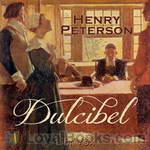 Dulcibel A Tale of Old Salem
Dulcibel A Tale of Old Salem
Dulcibel is a young, pretty and kind-hearted fictional character charged with Witchcraft during the infamous Salem Witch trials. During this time there is a group of "afflicted girls" who accuse Dulcibel and many others of Witchcraft, and during their trials show "undoubtable" proof that these people really are Witches. Will Master Raymond, Dulcibel's lover, be able to to secure Dulcibel's release from jail? Or will Dulcibel's fate be the gallows like so many other accused Witches of her time? | |
By: Owen Wister (1860-1938) | |
|---|---|
 Padre Ignacio, Or The Song Of Temptation
Padre Ignacio, Or The Song Of Temptation
Padre Ignacio has been the pastor of California mission Santa Ysabel del Mar for twenty years. In 1855 a stranger rides into the mission bringing news and a spiritual crisis. It's really more of a novella than a novel. | |
By: Mary Knight Potter (?-1915) | |
|---|---|
 Peggy's Trial
Peggy's Trial
Ten-year old Peggy Clayton and her two younger brothers, Teddy and Harry, live with their father, Dr. Clayton, and Nurse, a woman who has taken care of them since the death of their mother when Peggy was five. Peggy is a sweet and kind little girl with a big imagination and a great sense of fun. Peggy's Trial follows her adventures with her friends at school, the mischief she and her brothers cause poor old Nurse, and even Peggy’s being chased by a bull. But nothing can prepare Peggy, Teddy and Harry when they fear they may lose their beloved father to a stepmother. | |
By: Selma Lagerloef (1858-1940) | |
|---|---|
 Thy Soul Shall Bear Witness!
Thy Soul Shall Bear Witness!
“Thy Soul shall bear Witness” (Körkarlen) by the Swedish Nobel Laureate Selma Lagerlöf is a kind of spooky Novel. It was first published in 1912 and in English in 1922, the same year as the international release of the Silent Movie “The Phantom Carriage”, today considered a classic movie, and one that strongly influenced the Swedish Director Ingmar Bergman. A second Movie based on the Novel was made again in 1958. In English the Novel is today very rare, very few copies are said to exist... | |
By: Francis J. Finn (1859-1928) | |
|---|---|
 But Thy Love and Thy Grace
But Thy Love and Thy Grace
Father Finn's beautiful little tale can be read in an hour or so, but it conveys a lesson which ought to be of longer duration. The interest of the story is chiefly theological, turning, as it does, on the refining and ennobling effects of frequent confession and communion on the soul; yet it is so simply put that any child can understand it.Regina O'Connell is a poor factory girl whose earnings support herself and her bedridden sister. She is simplicity itself—one of those rare beings whom unselfishness and genuine humility make heroines in the true sense of the word... | |
By: W. S. Gilbert (1836-1911) | |
|---|---|
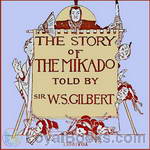 The Story of the Mikado
The Story of the Mikado
The Mikado is the ninth of the 14 Gilbert and Sullivan musical collaborations. It opened in 1885, had the second longest run for any work of musical theatre of the time, and remains the most frequently performed Gilbert and Sullivan. It was adapted as a children's book by W. S. Gilbert entitled The Story of The Mikado, which was Gilbert's last literary work (and published posthumously). It is a retelling of The Mikado, with various changes to simplify language or make it more suitable for children... | |
By: Maud Jean Franc | |
|---|---|
 Two Sides To Every Question: From A South Australian Standpoint
Two Sides To Every Question: From A South Australian Standpoint
'Two Sides to Every Question’: From a South Australian Standpoint is a meditation on poverty, wealth, and social aspiration set in the free settlement of Adelaide in pre-Federation Australia. The novel follows the lives of a cast of characters from different social classes as they negotiate the twists and turns in their respective fortunes. The newly-bereaved Alton family—an invalid widow and her two grown children, Tom and Nettie—sell their rural property and move to the slovenly back streets of the inner-city; they are determined to hold onto their dignity and values as they turn to earning a living for the first time... | |
By: Jessie Benton Frémont | |
|---|---|
 The Will and the Way Stories
The Will and the Way Stories
Simply put, this is a book of 9 short vignettes each of which describes a different scenario which demonstrates the age old adage: 'where there's a will, there's a way'. | |